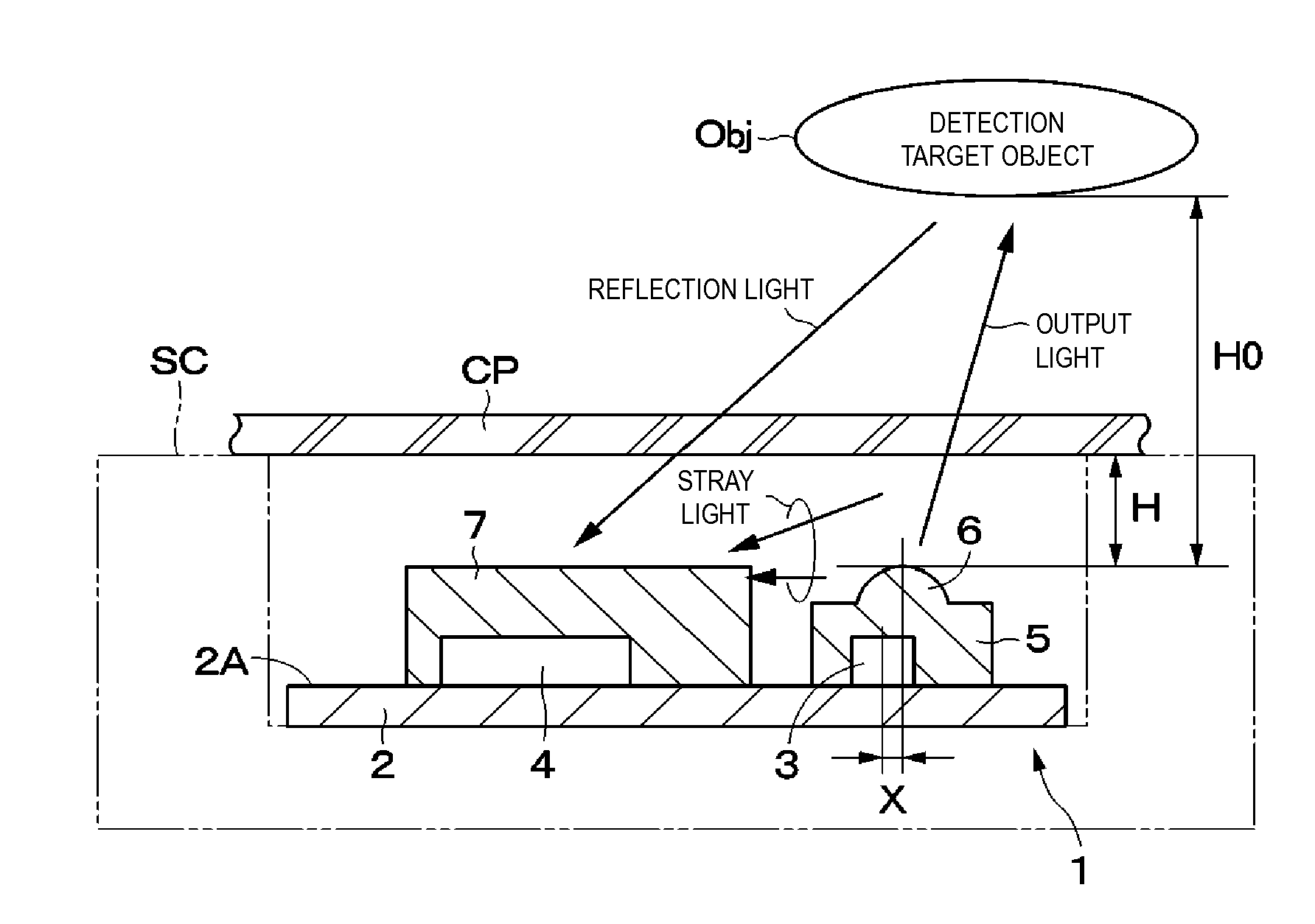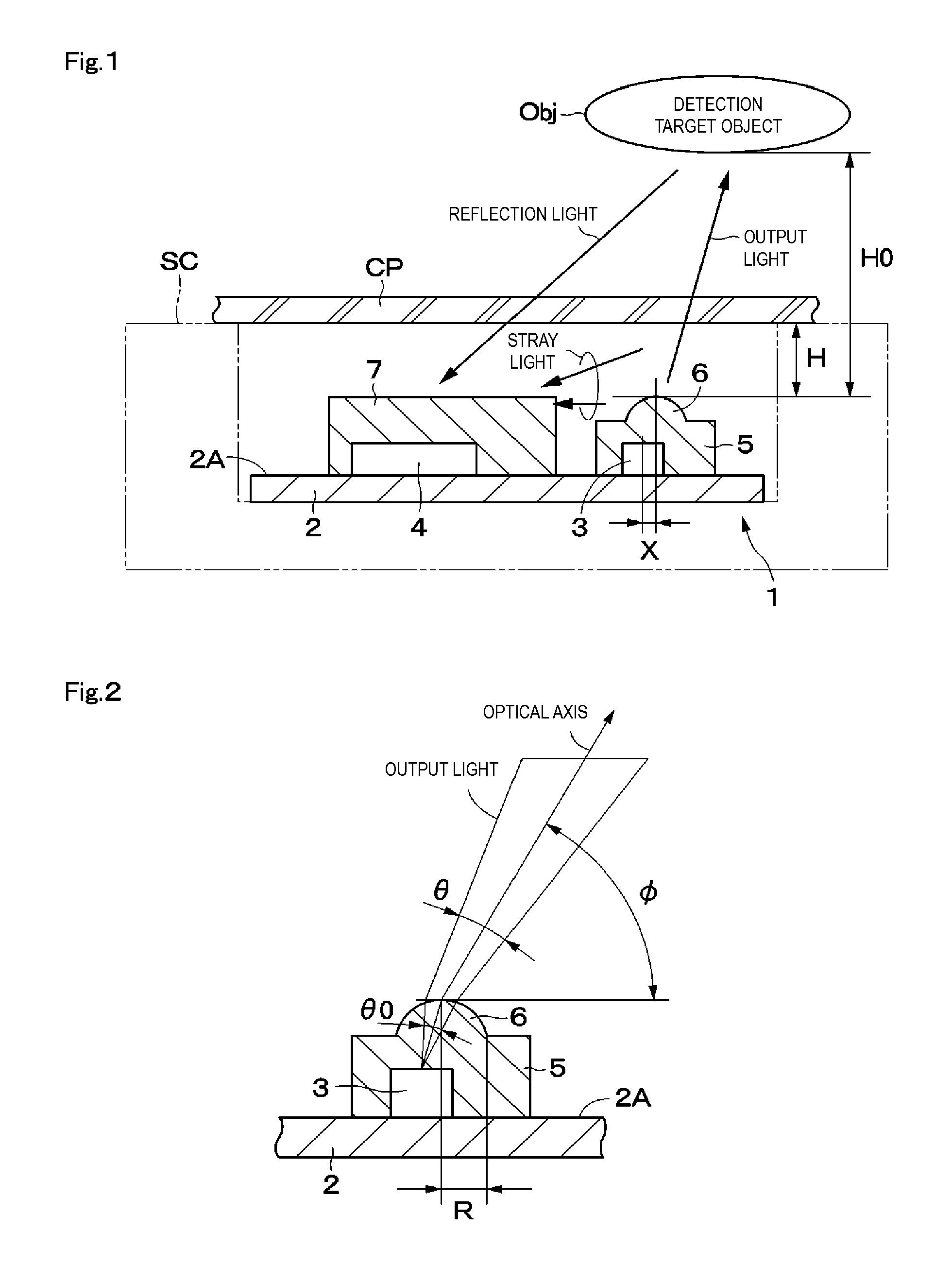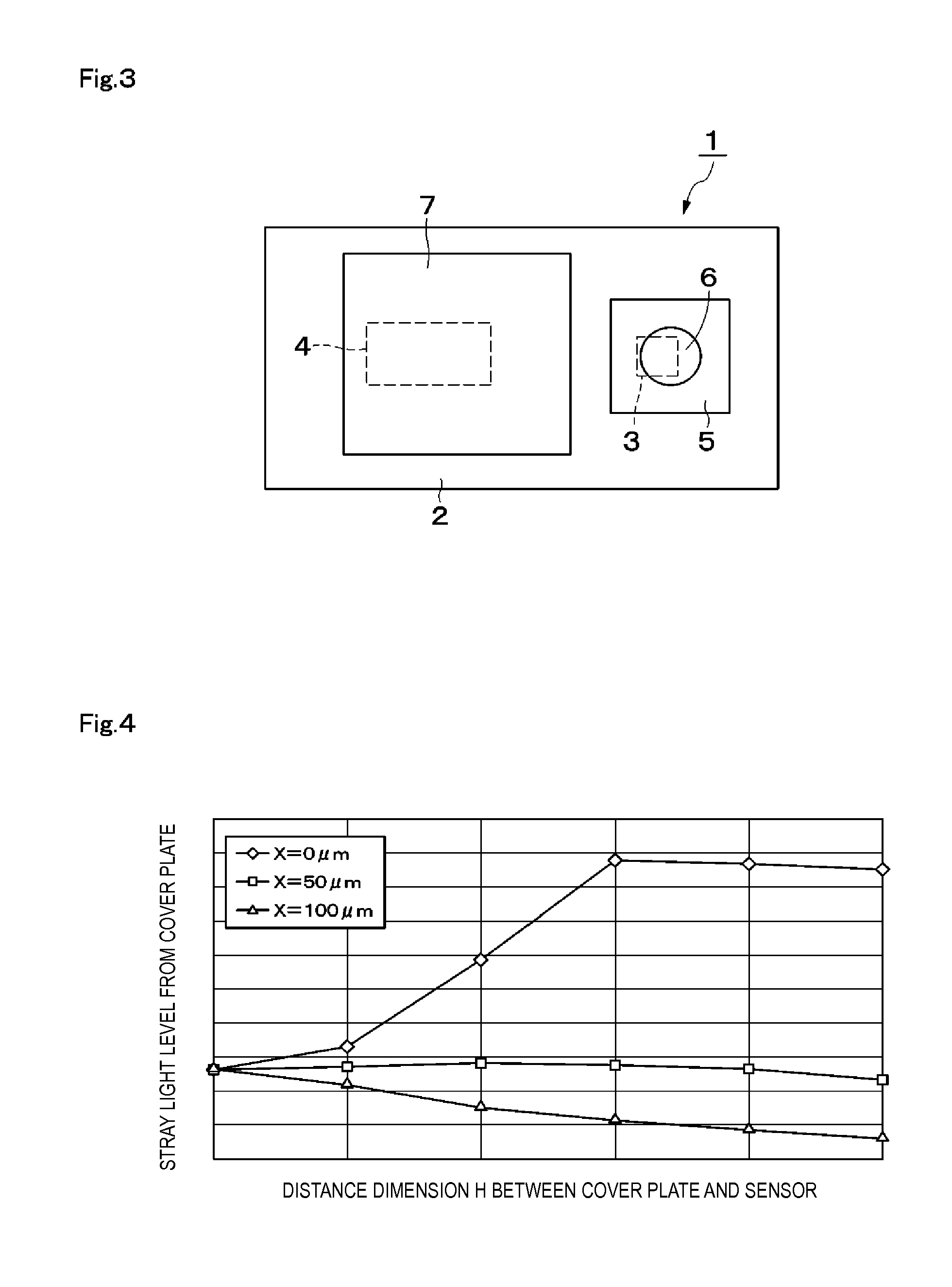Optical sensor
a technology of optical sensors and optical beams, applied in the field of optical beams, to achieve the effect of lowering the stray light level
- Summary
- Abstract
- Description
- Claims
- Application Information
AI Technical Summary
Benefits of technology
Problems solved by technology
Method used
Image
Examples
first embodiment
[0037]An optical sensor 1 is shown in FIGS. 1 through 3. The optical sensor 1 includes a substrate 2, a light-emitting element 3, a light-receiving element 4, a lens 6, and so on.
[0038]The substrate 2 is a plate formed of an insulating material. As the substrate 2, a printed circuit board is used, for example. On a surface 2A of the substrate 2, the light-emitting element 3 and the light-receiving element 4 are mounted.
[0039]The light-emitting element 3 is mounted on the surface 2A of the substrate 2, and outputs light such as infrared light, visible light, or the like. An optical axis of the light-emitting element 3 normally extends in a direction perpendicular to the surface 2A of the substrate 2 (Z axis direction), for example. As the light-emitting element 3, a light-emitting diode (LED), a laser diode (LD), or a vertical cavity surface emitting laser (VCSEL) is used, for example. In order to increase the resolution of detection and improve the S / N ratio, it is preferable to us...
third embodiment
[0082]In an optical sensor 31 two light-receiving elements 32 and 33 are mounted on the substrate 2, and these two light-receiving elements 32 and 33 are sealed by, for example, a transparent resin member 34. Lenses respectively configured to focus light on the light-receiving elements 32 and 33 may be provided in the transparent resin member 34.
[0083]The two light-receiving elements 32 and 33 are disposed at positions that do not sandwich the light-emitting element 3. For example, the light-emitting element 3 is disposed on the right side in FIG. 18, while both the light-receiving elements 32 and 33 are disposed on the left side in FIG. 18.
[0084]Meanwhile, the light-receiving element 32 and light-receiving element 33 are disposed at different positions in the upper-lower direction in FIG. 18. As such, when the detection target object Obj moving in the upper-lower direction in FIG. 18 passes over the optical sensor 31, light that is outputted from the light-emitting element 3 strik...
PUM
 Login to View More
Login to View More Abstract
Description
Claims
Application Information
 Login to View More
Login to View More - R&D
- Intellectual Property
- Life Sciences
- Materials
- Tech Scout
- Unparalleled Data Quality
- Higher Quality Content
- 60% Fewer Hallucinations
Browse by: Latest US Patents, China's latest patents, Technical Efficacy Thesaurus, Application Domain, Technology Topic, Popular Technical Reports.
© 2025 PatSnap. All rights reserved.Legal|Privacy policy|Modern Slavery Act Transparency Statement|Sitemap|About US| Contact US: help@patsnap.com



